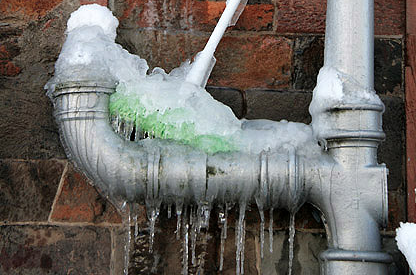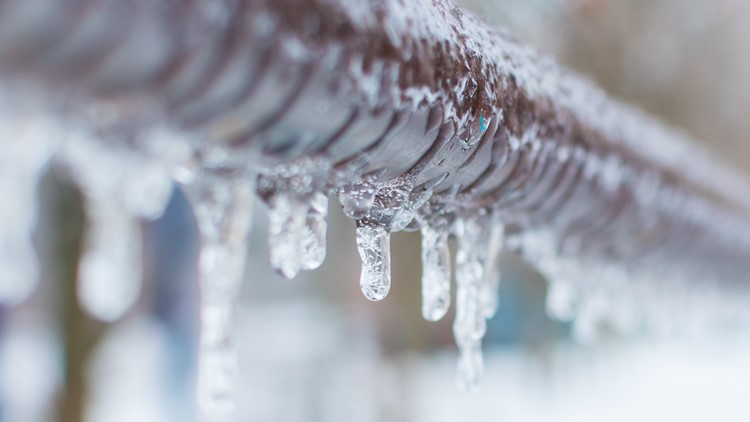Crucial Advice to Prevent Frozen Pipes in Cold Weather
Crucial Advice to Prevent Frozen Pipes in Cold Weather
Blog Article
Do you find yourself hunting for selective information around How To Avoid Freezing Pipes?

Winter can wreak havoc on your plumbing, particularly by freezing pipes. Right here's exactly how to stop it from occurring and what to do if it does.
Intro
As temperatures decline, the threat of frozen pipelines rises, possibly bring about pricey fixings and water damage. Recognizing just how to stop frozen pipelines is crucial for home owners in cool environments.
Recognizing Icy Pipelines
What creates pipelines to freeze?
Pipes freeze when subjected to temperature levels below 32 ° F (0 ° C) for extended durations. As water inside the pipes ices up, it increases, putting pressure on the pipeline walls and potentially triggering them to break.
Risks and problems
Icy pipelines can bring about supply of water interruptions, building damages, and expensive repair work. Burst pipes can flood homes and cause extensive architectural damages.
Signs of Frozen Piping
Identifying icy pipes early can prevent them from bursting.
How to recognize icy pipelines
Try to find reduced water circulation from taps, uncommon smells or sounds from pipelines, and visible frost on subjected pipes.
Prevention Tips
Shielding susceptible pipelines
Cover pipelines in insulation sleeves or use warmth tape to protect them from freezing temperature levels. Focus on pipelines in unheated or outside areas of the home.
Home heating strategies
Keep indoor rooms sufficiently warmed, specifically locations with pipes. Open up cabinet doors to allow cozy air to distribute around pipelines under sinks.
Shielding Outdoor Pipes
Yard tubes and outside faucets
Disconnect and drain yard pipes prior to winter season. Mount frost-proof faucets or cover exterior taps with shielded caps.
What to Do If Your Pipelines Freeze
Immediate actions to take
If you presume icy pipes, maintain taps available to relieve pressure as the ice thaws. Make use of a hairdryer or towels taken in hot water to thaw pipes slowly.
Long-Term Solutions
Structural changes
Take into consideration rerouting pipelines far from exterior walls or unheated locations. Include extra insulation to attic rooms, cellars, and crawl spaces.
Upgrading insulation
Purchase high-quality insulation for pipes, attic rooms, and walls. Proper insulation aids maintain constant temperatures and lowers the danger of frozen pipelines.
Final thought
Preventing frozen pipes calls for positive procedures and fast feedbacks. By recognizing the reasons, indicators, and safety nets, house owners can protect their plumbing throughout winter.
5 Ways to Prevent Frozen Pipes
Drain Outdoor Faucets and Disconnect Hoses
First, close the shut-off valve that controls the flow of water in the pipe to your outdoor faucet. Then, head outside to disconnect and drain your hose and open the outdoor faucet to allow the water to completely drain out of the line. Turn off the faucet when done. Finally, head back to the shut-off valve and drain the remaining water inside the pipe into a bucket or container. Additionally, if you have a home irrigation system, you should consider hiring an expert to clear the system of water each year.
Insulate Pipes
One of the best and most cost-effective methods for preventing frozen water pipes is to wrap your pipes with insulation. This is especially important for areas in your home that aren’t exposed to heat, such as an attic. We suggest using foam sleeves, which can typically be found at your local hardware store.
Keep Heat Running at 65
Your pipes are located inside your walls, and the temperature there is much colder than the rest of the house. To prevent your pipes from freezing, The Insurance Information Institute suggests that you keep your home heated to at least 65 degrees, even when traveling. You may want to invest in smart devices that can keep an eye on the temperature in your home while you’re away.
Leave Water Dripping
Moving water — even a small trickle — can prevent ice from forming inside your pipes. When freezing temps are imminent, start a drip of water from all faucets that serve exposed pipes. Leaving a few faucets running will also help relieve pressure inside the pipes and help prevent a rupture if the water inside freezes.
Open Cupboard Doors
Warm your kitchen and bathroom pipes by opening cupboards and vanities. You should also leave your interior doors ajar to help warm air circulate evenly throughout your home.

I was made aware of that article on Helpful Tips to Prevent Frozen Pipes this Winter from a buddy on a different site. Do you know about someone else who is serious about the niche? Feel free to share it. Thank you for your time invested reading it.
Book Report this page